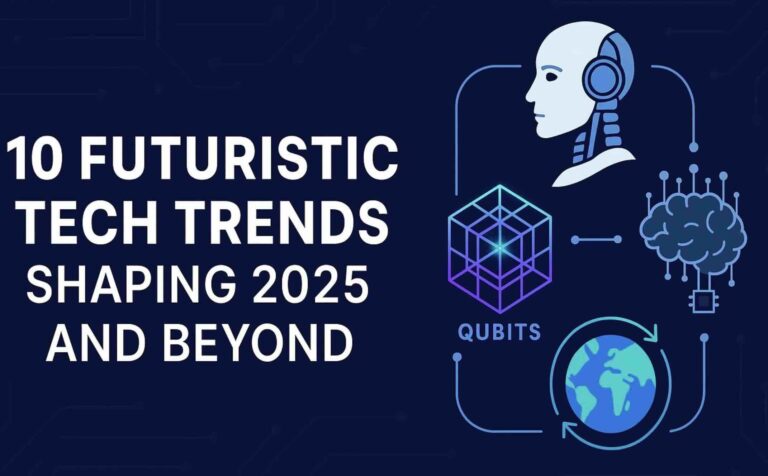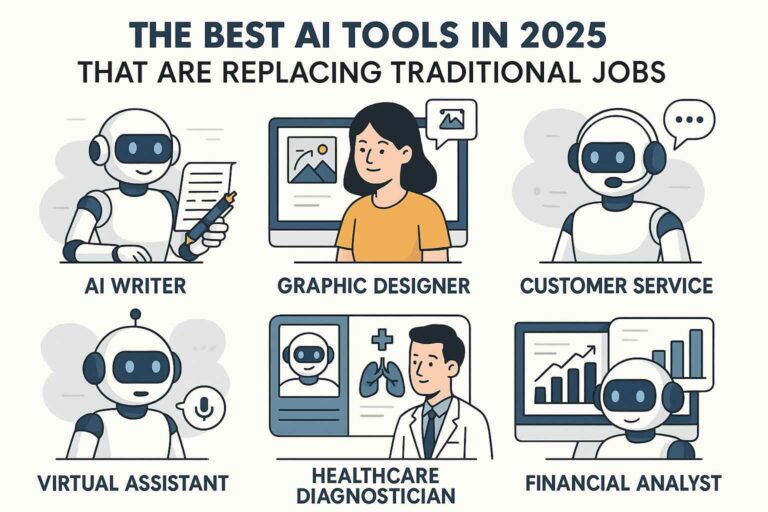Machine learning is a vital component of data science, enabling the development of models that can make predictions, identify patterns, and optimize processes based on data. Whether you’re a budding data scientist or a seasoned professional, understanding the core machine learning algorithms is essential. This article delves into ten must-know machine learning algorithms, explaining each in detail with easy-to-understand language, practical examples, and key considerations for implementation.
1. Linear Regression
Linear regression is one of the simplest and most widely used algorithms for predictive analysis. It models the relationship between a dependent variable and one or more independent variables using a linear equation. It’s essential for predicting continuous outcomes.
How It Works
In linear regression, the goal is to fit a line that best represents the relationship between the dependent and independent variables. The equation of this line is: y=mx+cy = mx + cy=mx+c where yyy is the dependent variable, xxx is the independent variable, mmm is the slope of the line, and ccc is the y-intercept. The model minimizes the sum of squared differences between the observed and predicted values.
Example
Suppose you’re predicting house prices based on square footage. The linear regression model would fit a line to the data points of house prices (y) and square footage (x), allowing you to make predictions for new houses based on their size.
Key Considerations
- Assumes a linear relationship between the variables.
- Sensitive to outliers which can skew the results.
- Multicollinearity among independent variables can affect the model’s performance.
2. Logistic Regression
Logistic regression is used for binary classification problems where the outcome is either 0 or 1, such as spam detection or disease diagnosis. Despite its name, it’s a classification algorithm.
How It Works
Logistic regression estimates the probability that a given input point belongs to a certain class. It uses the logistic function (sigmoid) to constrain the output between 0 and 1: σ(x)=11+e−x\sigma(x) = \frac{1}{1 + e^{-x}}σ(x)=1+e−x1 The logistic regression model then applies this function to a linear combination of the input features.
Example
If you’re building a spam filter, logistic regression can be used to classify emails as spam (1) or not spam (0) based on features like the presence of certain words.
Key Considerations
- Assumes a linear relationship between the log odds of the dependent variable and the independent variables.
- Effective for binary classification, but can be extended to multiclass problems using techniques like one-vs-all.
3. Decision Trees
Decision trees are versatile algorithms used for both classification and regression tasks. They model decisions and their possible consequences as a tree-like structure, making them easy to interpret.
How It Works
A decision tree splits the data into subsets based on the value of input features. Each node in the tree represents a feature, each branch represents a decision rule, and each leaf represents an outcome.
Example
In a decision tree for loan approval, nodes might represent factors like credit score and income. The tree splits based on these factors to decide whether to approve or reject a loan application.
Key Considerations
- Prone to overfitting, especially with deep trees. Pruning methods can mitigate this.
- Easy to visualize and interpret.
- Can handle both numerical and categorical data.
4. Random Forest
Random Forest is an ensemble learning method that combines multiple decision trees to improve accuracy and robustness. It’s particularly useful for handling large datasets with high dimensionality.
How It Works
Random Forest constructs multiple decision trees during training and outputs the average prediction (regression) or majority vote (classification) of the individual trees. This approach reduces overfitting and improves generalization.
Example
In a Random Forest model for predicting stock prices, each tree might analyze different subsets of the data and features, providing a more reliable prediction when combined.
Key Considerations
- More computationally intensive than single decision trees.
- Provides feature importance scores, which can be useful for feature selection.
- Generally robust to overfitting.
5. Support Vector Machines (SVM)
Support Vector Machines are powerful for classification tasks, especially when the data has a clear margin of separation. SVMs can also handle regression problems (Support Vector Regression).
How It Works
SVM finds the hyperplane that best separates the data into classes. The optimal hyperplane maximizes the margin between the closest points of the different classes, known as support vectors. In cases where the data is not linearly separable, SVM uses kernel functions to project the data into a higher-dimensional space.
Example
For a handwritten digit recognition task, SVM can classify images of digits by finding the hyperplane that separates digit classes (0-9) based on pixel intensity features.
Key Considerations
- Effective in high-dimensional spaces.
- Choice of kernel and regularization parameters significantly impact performance.
- Computationally intensive, especially with large datasets.
6. K-Nearest Neighbors (KNN)
K-Nearest Neighbors is a simple, instance-based learning algorithm used for both classification and regression. It’s non-parametric, meaning it makes no assumptions about the data distribution.
How It Works
KNN classifies a data point based on the majority class of its K nearest neighbors in the feature space. For regression, it predicts the value based on the average of its K nearest neighbors.
Example
In a recommendation system, KNN can suggest movies to a user based on the preferences of similar users (neighbors) in the dataset.
Key Considerations
- Sensitive to the choice of K. A large K reduces noise but may blur class boundaries.
- Computationally intensive during prediction as it requires calculating the distance to all training points.
- Performance can degrade with high-dimensional data (curse of dimensionality).
7. Naive Bayes
Naive Bayes is a probabilistic classifier based on Bayes’ Theorem, assuming independence between features. It’s particularly effective for large datasets and text classification tasks.
How It Works
Naive Bayes calculates the probability of each class given the input features and selects the class with the highest probability. Despite its simplicity, it performs well on a variety of tasks, especially text classification.
Example
Naive Bayes is commonly used in spam detection, where the presence of certain words in an email (features) are used to calculate the probability of the email being spam.
Key Considerations
- Assumes feature independence, which may not hold in practice, but the algorithm still performs well.
- Efficient with large datasets.
- Particularly useful for text data (e.g., bag-of-words models).
8. K-Means Clustering
K-Means is an unsupervised learning algorithm used for clustering data into K distinct groups based on feature similarity. It’s simple yet powerful for identifying hidden patterns in the data.
How It Works
K-Means assigns each data point to one of K clusters by minimizing the sum of squared distances between the points and the cluster centroids. The algorithm iteratively updates the centroids and reassigns points until convergence.
Example
K-Means can segment customers into different groups based on purchasing behavior, allowing targeted marketing strategies for each group.
Key Considerations
- Sensitive to the choice of K. Methods like the Elbow Method can help determine the optimal number of clusters.
- Assumes clusters are spherical and equally sized, which may not always be the case.
- Initialization of centroids can impact the final clusters; multiple runs with different initializations can mitigate this.
9. Principal Component Analysis (PCA)
PCA is a dimensionality reduction technique used to reduce the number of features while preserving as much variance as possible. It’s crucial for visualizing high-dimensional data and improving computational efficiency.
How It Works
PCA transforms the data into a new coordinate system where the axes (principal components) are ordered by the amount of variance they capture. The first principal component captures the most variance, and so on. This transformation reduces the dimensionality while retaining the most important information.
Example
In image compression, PCA can reduce the number of pixels (features) while retaining the essential information, resulting in smaller file sizes with minimal loss of quality.
Key Considerations
- Assumes linear relationships between features.
- Sensitive to the scaling of the data; features should be standardized before applying PCA.
- Useful for noise reduction and visualization of high-dimensional data.
10. Neural Networks
Neural Networks are a family of algorithms inspired by the human brain, used for a wide range of tasks including image and speech recognition, natural language processing, and more. Deep learning, a subset of neural networks, involves multiple hidden layers, allowing the model to learn complex patterns.
How It Works
A neural network consists of layers of interconnected nodes (neurons). Each connection has a weight, and the network learns by adjusting these weights based on the error of its predictions. Training is typically done using backpropagation and gradient descent.
Example
In image recognition, a neural network can classify objects in photos by learning features such as edges, textures, and shapes through multiple layers of processing.
Key Considerations
- Requires a large amount of data and computational resources.
- Prone to overfitting; techniques like dropout and regularization can help.
- Hyperparameter tuning (e.g., number of layers, learning rate) significantly impacts performance.
Best Practices for Implementing Machine Learning Algorithms
1. Data Preprocessing
- Cleaning: Handle missing values, outliers, and ensure the data is in a suitable format.
- Normalization/Standardization: Scale features to ensure consistent input for algorithms.
2. Feature Engineering
- Selection: Identify and select the most relevant features.
- Transformation: Create new features that better capture the underlying patterns.
3. Model Selection
- Problem Type: Choose the appropriate algorithm based on the problem (classification, regression, clustering).
- Data Characteristics: Consider the size, dimensionality, and nature of your data.
4. Hyperparameter Tuning
- Optimization Techniques: Use grid search, random search, or Bayesian optimization.
- Cross-Validation: Validate the model using techniques like k-fold cross-validation to ensure robustness.
5. Evaluation Metrics
- Classification: Use metrics like accuracy, precision, recall, F1 score.
- Regression: Use metrics like RMSE, MAE, R².
6. Regularization
- Techniques: Apply L1/L2 regularization to prevent overfitting and improve generalizability.
7. Scalability
- Algorithm Efficiency: Choose algorithms that can handle large datasets.
- Parallelization: Leverage parallel processing to speed up training and prediction.
8. Interpretability
- Model Transparency: Use models that provide insights into their decision-making process when interpretability is crucial.
9. Continuous Learning
- Model Updating: Regularly update your models with new data to maintain their accuracy and relevance.
10. Model Deployment
- Scalability: Ensure your model can handle production workloads.
- Monitoring: Continuously monitor the model’s performance and retrain as necessary.
Conclusion
Understanding and implementing these ten machine learning algorithms is fundamental for any data scientist. Each algorithm has its strengths and applications, and knowing when and how to use them is crucial for solving real-world problems. By following best practices and continuously learning, you can harness the power of machine learning to drive insights and innovation in your projects.
With this knowledge, you’re well-equipped to tackle various machine learning challenges and contribute to advancing the field of data science.










